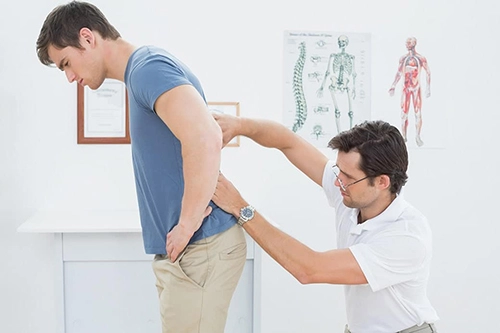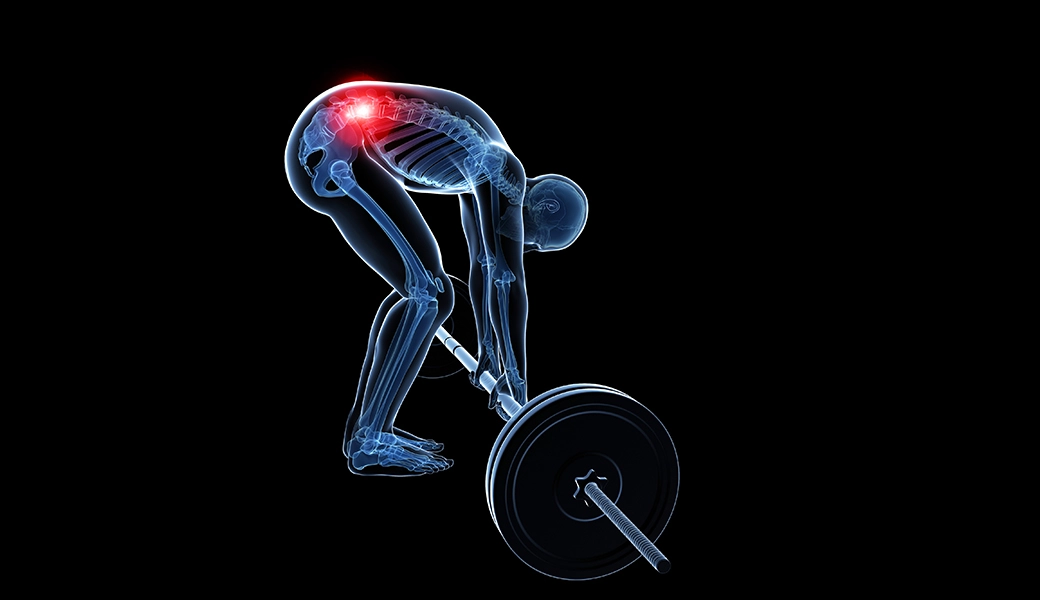If you suffer from spinal stenosis, you are likely familiar with pain. Often, exercise can help the condition. But some exercises should be avoided.
In fact, some exercises can worsen your condition and exacerbate your symptoms. The following types of exercise should be avoided: Heavy Lifting, Twisting and Bending, High Impact Sports and Workouts, Long Walks, and Excessive Amounts of Rest – although that last is not technically an exercise, but the lack thereof.
Basically, if you have spinal stenosis you have to be aware that exercises that stress your spine may be problematic. Specifically, you should avoid doing any of the following exercises:
1. Avoid Heavy Lifting
Since spinal stenosis involves the health of the spine, you should, naturally, avoid those types of exercises that stress or threaten to injure the spine in any way. One such exercise is heavy lifting. Not only does this include actual exercise routines like those at a gym using weights – like deadlifting and such – it also includes normal activities that might involve the lifting of heavier objects.
Whether it’s a crate filled with books or a heavy box filled with old-time records, if you have spinal stenosis of any kind – whether it be lumbar spinal stenosis, cervical spinal stenosis, or even foraminal stenosis – you should give lifting it a pass. Basically, you should avoid any activity that puts added pressure or weight on your spine.
2. Avoid Exercises and Stretches that Involve Twisting and Bending
Again, as the region affected by spinal stenosis is the spine, you’ll want to avoid twisting and bending motions. Those are two types of motions that involve the spine more than any other structure in the body. With stenosis, you have to treat your spine as if it’s fragile. This means even low impact sports like golf should be avoided, because a natural golf swing will involve the twisting of the spine. Similarly, you should avoid bending over to pick an object up.
Of special note, is the all-too-common standing back extension. Basically, this is the name of the stretch many people perform when they stand after sitting for a long time. It typically involves standing as straight as you can, placing your hands on your hips, and then bending your back backward.
Although occasionally, this can be beneficial to some forms of back pain, more often than not, it is counterproductive. It often leads to more pain and more severe symptoms. So avoid this stretch and any other stretch or exercise that forces you to bend your back backward. This includes certain yoga poses like the cobra, for example. Although, generally, a low-impact stretching routine like that found in yoga will be beneficial, there are certain poses you should avoid.
3. Avoid High Impact Sports and Workouts
Again, you have to proceed under the assumption that your spine is fragile and you want to stress it and the nerves and muscles your condition is affecting as little as possible. This means that heavy-duty sports like football and rugby are out of the question. Even a seemingly less stressful sport like running still puts unwanted weight onto the muscles of your back and legs – two areas with nerves that are often affected by stenosis. So, say no to running as well.
4. Avoid Taking Long Walks
Long walks can strain back and leg muscles and may, unfortunately, result in greater pain in the long run. Although walks are, generally, a lower impact exercise than, say, football or something similar, they can still do damage if you overdo it.
Spending too much time walking will, likely, result in extra pressure being applied to the lower parts of the body like the legs, lower back, and knees. And all these body parts are more vulnerable to pain if you suffer from a condition like spinal stenosis.
While short walks can serve as a type of spinal stenosis treatment without surgery, you have to be careful. Start with shorter distances. Be cautious at first, until you figure out what your condition can tolerate. Then, in time, you can increase distance and pace accordingly.
5. Avoid Excessive Amounts of Rest
One of the first conservative treatments commonly prescribed by chiropractors, physical therapists, and doctors is simple rest. However, it is, generally, limited to no more than 48 hours or so.
Then, the typical advice is to start moving, get some exercise, and, perhaps, look into getting chiropractic care for spinal stenosis. While the initial period of rest will allow your body to recuperate from some stress and strain, and allow inflamed areas to recover somewhat, too much rest will lead to muscle atrophy. And you don’t want that! You want to move about and stay active so that you can maintain a healthy lifestyle.
Now that you know what to avoid, let’s take a brief look at some of the science about spinal stenosis and how spinal stenosis should be treated.

The Science of Spinal Stenosis
A study by Elsevier published in Science Direct found that “the prevalence of acquired stenosis increased with age.” It also determined that lumbar spinal stenosis was “associated with a threefold higher risk of experiencing lower back pain.” (1)
A study in Sage Journals of 45 patients found “that therapeutic exercises are effective for pain and disability in patients with lumbar spinal stenosis.” (2)
A study by Elsevier published in Science Direct featured a 78-year-old man with severe degenerative lumbar stenosis at multiple locations on his spine. He was successfully treated with flexion-distraction manipulation (a form of chiropractic manipulation of the spine) to the extent that his lower back pain resolved and the frequency and intensity of his leg pain decreased. (3)
A case study by Elsevier published in Science Direct featured a 70-year-old woman diagnosed with cervical spinal cord deformation and cervical spinal stenosis. She was successfully treated with two chiropractic techniques: Advanced Biostructural Therapy and Atlas Coccygeal Technique. She remained symptom-free one year later. (4)
If you are looking for top-rated chiropractic care in Anchorage or Juneau, visit us at Better Health Alaska.
Now that you know a little bit about how prevalent spinal stenosis is and how it should be treated, check out this post on some of the things you can do to get rid of lower back pain in general.
Conclusion
Although one of the most common forms of conservative care for spinal stenosis is exercise, it is critical that you recognize that not all types of exercise are necessarily helpful. I hope the above list helps you avoid those exercises that are counterproductive and can lead to a worsening of your symptoms. Lastly, always remember to consult a medical professional before altering your exercise routine to deal with a medical problem.









